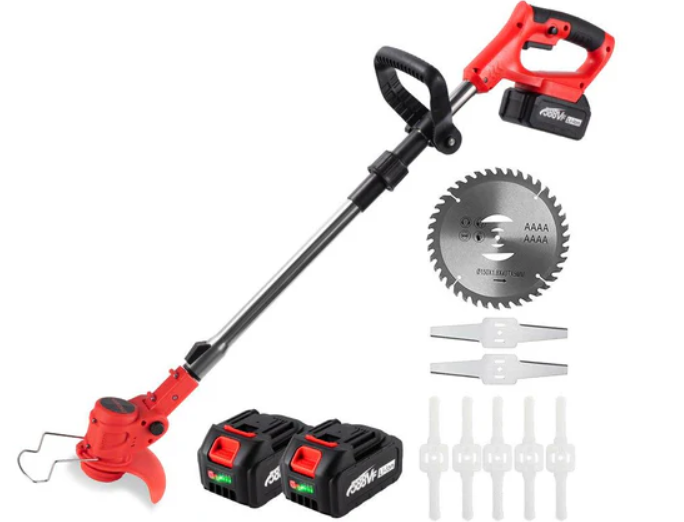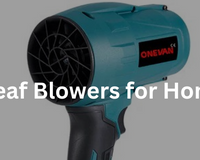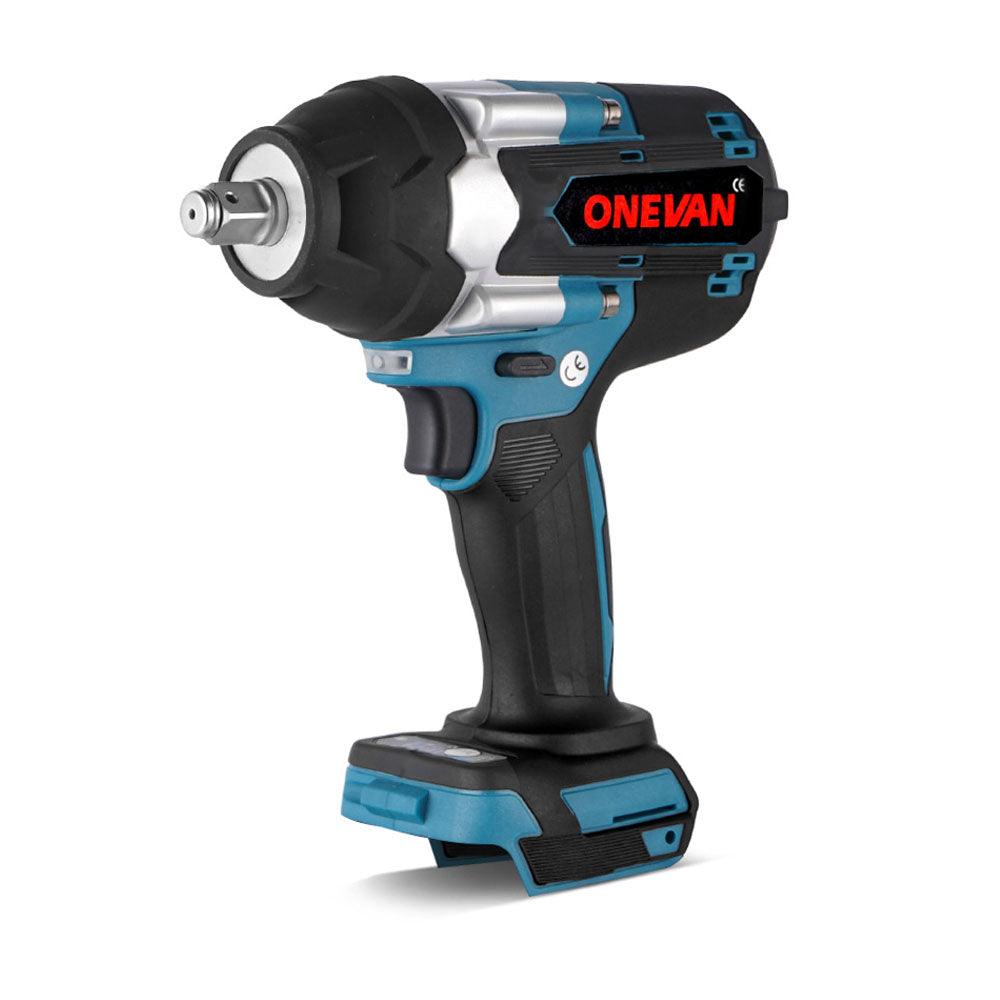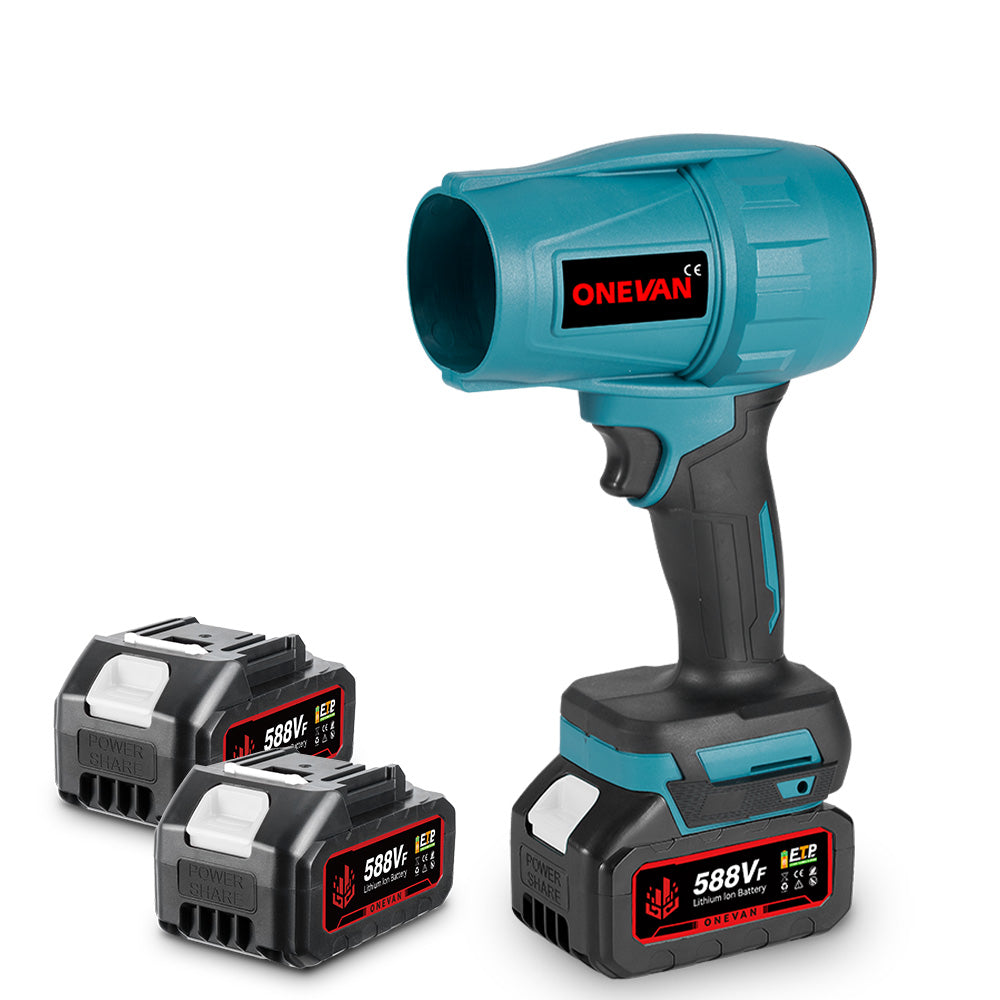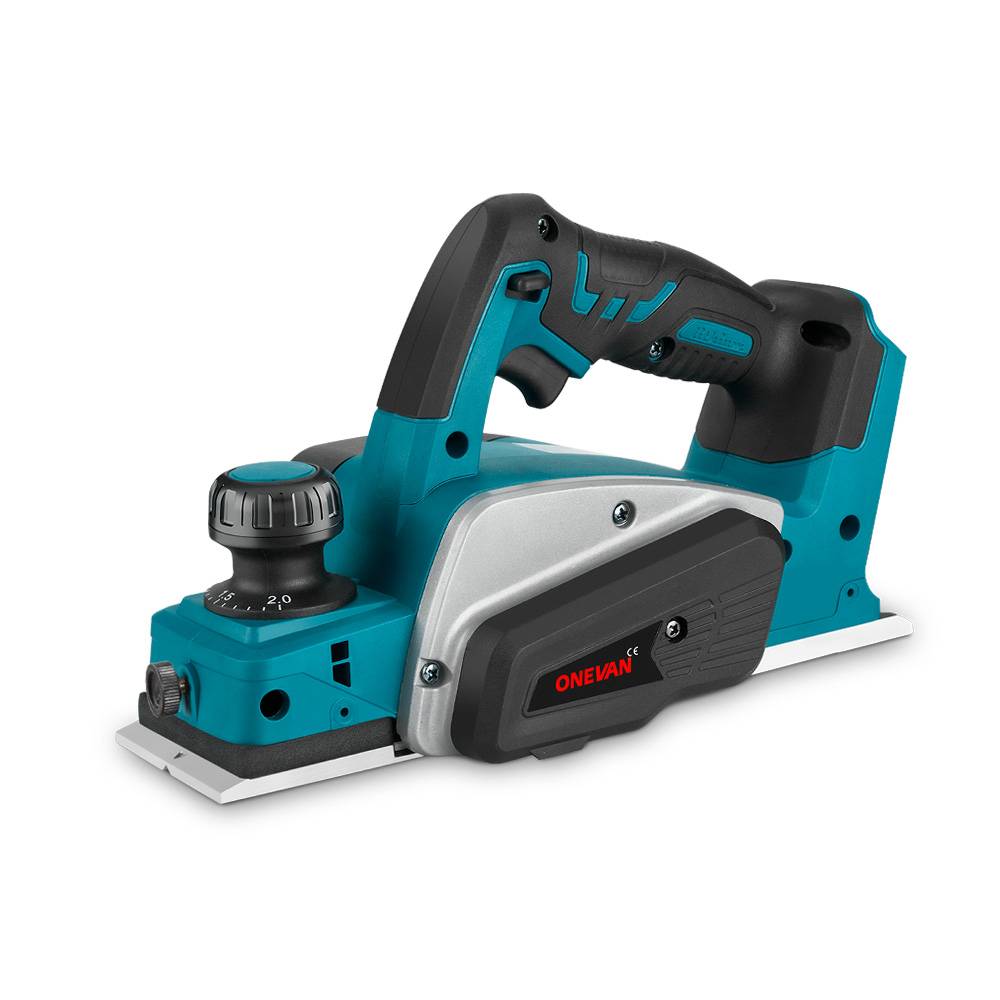1. Conozca los tipos de césped que tiene
1.1 Tipos de césped comunes en América del Norte
Conocer el tipo de césped que tiene en su jardín garantiza que se le dé el cuidado y el mantenimiento adecuados. En América del Norte, destacan una selección de especies de césped, cada una de las cuales tiene necesidades específicas de luz solar, agua y corte.
Hierba azul de Kentucky
El pasto azul de Kentucky es popular por su textura fina que crea un aspecto de césped elegante. Requiere condiciones óptimas y mucho cuidado para que crezca un césped exuberante, verde y resistente. Este césped requiere mucho mantenimiento, pero ofrece grandes beneficios. Es perfecto para céspedes domésticos en el norte de los EE. UU., ya que puede soportar bien el clima frío. Además, esta variedad puede no rendir bien en condiciones extremadamente cálidas o secas y no le gusta demasiado la sombra. El pasto azul de Kentucky puede repararse por sí solo si se lo raspa, pero algunos tipos de césped pueden estresarse fácilmente.
Grama
El césped de las Bermudas no es una opción muy elegante para los céspedes, especialmente para los lugares con un clima muy cálido y con poca o ninguna lluvia. Este césped es resistente y tiene la habilidad de recuperarse rápidamente de mucho pisoteo, por lo que es el favorito de los propietarios de viviendas con mucho tráfico al aire libre. Florece solo con una cantidad generosa de luz solar y es más abundante en el sur. El césped de las Bermudas es un campeón en cuanto a resistir el calor, hacer frente a la sequía y no verse afectado por los altos niveles de salinidad. Recuerde que el proceso requerirá que usted esté constantemente atento a utilizar el alimento y el cuidado adecuados que se merece.
Festuca alta
La festuca alta es una hierba excelente que se adapta a diferentes climas, tanto a zonas más secas como más húmedas. Es especialmente adecuada para las regiones que no están situadas ni al norte ni al sur, sino en el medio: las zonas de transición.
Césped zoysia
Este tipo de césped tolera bien el tráfico peatonal intenso, lo que lo hace perfecto para patios activos. Se utiliza principalmente en las zonas del sur, pero también puede crecer bien un poco más al norte gracias a su capacidad para soportar temperaturas más frías mejor que otros pastos de estación cálida.
Hierba de San Agustín
El césped no solo florece en los climas cálidos del sureste de los EE. UU., sino que también encuentra un entorno encantador en estados como Texas. Además, la variedad también se cultiva en regiones tropicales y subtropicales de todo el mundo, como México, Australia y muchos otros. El césped San Agustín se desarrolla bien en áreas con pleno sol, aunque también puede tolerar una buena cantidad de sombra. El mantenimiento regular tiene el poder de transformar el césped San Agustín en un tono verde oscuro de alfombra potente que es fuerte y hermosa al mismo tiempo.
1.2 Tipos de césped más comunes en Europa
raigrás
El centeno es un tipo duro entre las especies de césped. Es resistente, fácil de cultivar y, por lo tanto, se utiliza mucho en aquellas regiones que experimentan diversas condiciones climáticas. En los EE. UU., la gente lo adora por la rapidez con la que echa raíces y se establece por sí solo si desea tener un césped saludable muy pronto. Todo depende de la ubicación de su hogar y de la característica que desee en el espacio exterior; el centeno podría ser perfecto para usted. Es una opción obligada para lugares con climas más fríos debido a que puede soportar el frío bastante bien.
Hierba de pradera (Poa)
Otro tipo de hierba es la hierba de los prados, comúnmente conocida como Poa, y literalmente nombrada así por el color casi verde azulado de la planta, que se puede observar primero en áreas bajas, ya que los prados se perciben como áreas bajas. Esta especie de hierba contiene 570 especies. Por lo general, se encuentra en zonas más frías, a menudo con temperaturas límite, y es conocida por su base estable y buena flexibilidad. El sustantivo "Poa" es de origen griego y significa "forraje", y las dos palabras revelan el escondite animal. La hierba de los prados es muy querida por la gente debido a su aspecto verde, fresco y orgánico. Cortar le permite no solo tener un césped corto y ordenado, sino también los más difíciles de cortar, ya que cuanto más profundo se corta, menos probabilidades hay de que las plagas y enfermedades lo ataquen. El corte regulado las 24 horas del día obviamente juega un papel importante en un césped saludable y verde. En consecuencia, cortar le permite estar en estrecho contacto con su área al aire libre y demostrar su aprecio. Al mismo tiempo, hace que el medio ambiente sea más limpio al eliminar el césped.
Hierba doblada
La especie de césped más común que se encuentra en todo el mundo para céspedes es el Agrostis, y se ve más en campos de golf cuyo césped necesita tener césped muy corto. Este césped es increíblemente resistente y, si no se corta demasiado, resistirá ser recortado cerca del suelo sin dañarse. Es ideal para lugares que suelen usarse en exceso, ya que su sistema de raíces más grueso y denso hace que crezca más rápido. Esto, a su vez, hace que su tarea de mantenimiento sea manejable, ya que crece rápido y se ve bien por sí solo sin requerir mucha atención. En cuanto al corte de su césped, el Agrostis sería una elección perfecta, ya que puede soportar un corte a una altura corta y se mantiene verde y saludable, una característica que no es común en otros tipos de césped porque cuando se corta a tales niveles, se vuelve marrón y muere correspondientemente. No solo es funcional, sino que agrega más estilo a su territorio al aire libre.
Festuca roja
La festuca, comúnmente conocida como festuca roja, se encuentra en la lista de céspedes de bajo mantenimiento, que se destaca por su capacidad de prosperar incluso en temperaturas más frías con una cantidad mínima de cuidado. La festuca es famosa por su textura fina y su color verde intenso que se ve rico y aterciopelado cuando se la introduce en la naturaleza. Las preferencias de la festuca roja, en relación con el corte del césped, incluyen mantener un corte relativamente alto para preservar su bienestar. Algunas gramíneas de estación cálida son buenas para áreas que no están muy pisadas, ya que el corte frecuente a una altura baja puede forzar esta variedad de céspedes. Extender un poco las hojas de las lanzas evitará que el agua se escurra y, por lo tanto, el césped se mantendrá más seco y más alto en la privacidad de su propio patio trasero.
Festuca fina
El bajo mantenimiento y la alta tolerancia a la sombra de la Festuca Fina exigen una menor frecuencia de corte y fertilización, lo que indica que es perfecta para aquellas personas que desean un césped fino con menos esfuerzo. El césped es bastante resistente y se adapta a muchos tipos de suelo, por lo que puede prosperar incluso en suelos malos, mientras que otras gramíneas podrían no hacerlo tan bien. En lo que respecta al corte del césped de la Festuca Fina, se debe elegir la opción delicada. Es ventajoso tener una altura de corte más alta para estimular el crecimiento de las raíces, así como para desarrollar resistencia contra los factores estresantes.
1.3 Ajuste de las cortadoras de césped inalámbricas para diferentes tipos de césped
Ajuste de altura de corte
La altura de cada tipo de césped puede ser diferente para que se mantenga en buenas condiciones, estimule el crecimiento y sea atractivo visualmente. Por ejemplo, se puede plantar una variedad más alta para abordar el desafío de la resistencia a la sequía y luego otra variedad más baja para aumentar la densidad del césped. Esta capacidad de movilidad es una de las numerosas ventajas de usar un cortacésped inalámbrico .
Varias cuchillas de corte o configuraciones de cuchillas
La selección adecuada de cuchillas o el ajuste de la configuración de las cuchillas en su cortadora de césped inalámbrica le permitirán un mejor crecimiento del césped. Según el tipo de césped, es posible que necesite una forma particular de cuchilla para realizar el corte adecuado. Por ejemplo, el césped con hojas más finas puede requerir una cuchilla más afilada, logrando así un corte limpio y una superficie del suelo que evitará el desgarro y, por lo tanto, las enfermedades. Algunas cortadoras de césped inalámbricas ofrecen múltiples cuchillas o configuraciones ajustables para cumplir con ese propósito. Esto ayuda a lograr céspedes perfectamente cuidados que mejoran la salud y la belleza de su jardín al aire libre.
Velocidad de corte variable
La velocidad de corte ajustable de un cortacésped inalámbrico permite un mejor cuidado del césped, ya que se puede modificar en función del tipo y la condición del césped. Los relieves de un tipo de césped y las diferentes condiciones requieren un ajuste de la velocidad. Los pastos más altos o densos pueden reducir la velocidad de corte para realizar un corte completo, mientras que los más atrofiados requieren una mayor velocidad de corte. Un cortacésped inalámbrico con esta característica tecnológica se convierte en una opción ideal que se adapta a sus requisitos para cualquier tipo de césped que tenga, lo que refleja la adaptabilidad necesaria para mantener los tipos de césped durante el mejor tiempo posible.
2. ¿Con qué frecuencia debes cortar el césped?
2.1 Indicadores de que es hora de cortar el césped
Longitud del césped
Estos son los indicadores más claros para concluir que el corte es inminente y se trata de la altura de crecimiento del césped. En general, la mayoría de los tipos de césped tienen una altura óptima para su salud y alto rendimiento, normalmente dentro de un rango fijo. El estado subóptimo del césped extremadamente largo puede ser un entorno perfecto para la vida de los insectos, mientras que el crecimiento de moho acuático puede empeorar la situación.
Ahora puede darle a su entorno natural un aspecto despreocupado y ordenado con solo presionar un botón. Las cortadoras de césped inalámbricas son fáciles de operar y cortan su césped de manera eficiente, dándole a su césped una altura perfecta. Esto significa que debe cortarse cuando el césped haya crecido hasta aproximadamente un tercio más que la altura deseada. En la mayoría de los tipos de césped, se debe mantener un crecimiento de 2 a 3 pulgadas como máximo. Por lo tanto, se recomienda cortarlo con una recortadora cuando el césped aumenta hasta 5 pulgadas de altura.
Salud del césped
Un césped en buen estado debe tener un aspecto fresco y, aunque lo pisemos, el pie no debe hundirse demasiado. Si notas que tu césped no está tan sano como debería, ya sea porque está desgastado, descolorido o ralo, entonces definitivamente deberías cortarlo bien. Una cortadora de césped inalámbrica es muy útil para estimular tu césped, ya que elimina las partes enfermas de los tallos de césped y permite que crezcan las nuevas hojas y que el césped siga siendo verde y saludable.
Clima
El factor meteorológico influye enormemente en la frecuencia de corte. En las épocas pico de la primavera y el otoño, se recomienda utilizar cortacéspedes inalámbricos, no solo por su facilidad y productividad, sino también por su tecnología inteligente. Por el contrario, en estaciones cálidas o secas, el crecimiento del césped podría verse frenado, por lo que se recomienda cortar el césped con menos frecuencia.
Tiempo transcurrido desde el último corte
Normalmente, si se deja pasar más de dos semanas entre cortes, el rendimiento se reducirá progresivamente durante la temporada de crecimiento. Cortar el césped con un cortacésped inalámbrico con regularidad ofrece la ventaja de mantenerlo limpio y saludable, ya que evita que crezca demasiado largo y raquítico. El principio es cortar no toda la hoja de césped, sino solo 1/3 de ella a la vez; luego, se puede manejar fácilmente si la longitud de un cortacésped inalámbrico es ajustable.
2.2 Aplicación de la regla de "un tercio" con una cortadora de césped inalámbrica
La regla de "un tercio" con una cortadora de césped eléctrica le permite recortar no más de un tercio superior de su terreno cada vez que corta. De esta manera, ayudará a que su césped se mantenga saludable, libre del estrés que pueden causar estas plagas y enfermedades, por lo que es más fácil construir la defensa contra ellas.
En el caso de una cortadora de césped inalámbrica, colóquela a la altura recomendada y siga cortando a la altura correcta. Con solo girar la perilla, que requiere un poco de esfuerzo, la cortadora de césped inalámbrica ahora es fácil de ajustar, lo que hace que la regla sea muy fácil de seguir. Si ha sido perezoso para mantener su césped y ahora el pasto ha crecido demasiado, es probable que necesite hacer funcionar su cortadora de césped inalámbrica durante aproximadamente dos cortes, hasta que el césped vuelva a su altura adecuada.
Este método permite mantener el césped en perfecto estado de salud en todo momento y verde por todos lados. Tenga en cuenta que una cortadora de césped inalámbrica resulta útil para seguir esta regla, lo que facilita un mantenimiento del césped fácil y eficiente que, en última instancia, contribuye a la salud y belleza general de su césped.
3. ¿Con qué frecuencia debes cortar el césped en primavera?
Pastos de estación fría : Adquiera el hábito semanal de cortar los pastos de estación fría a una altura de entre 3 y 4 pulgadas. Cortarlos con regularidad los ayuda a florecer en su mejor momento de crecimiento.Pastos de estación cálida : los pastos de clima cálido suelen empezar a brotar más tarde en la primavera que los de estación fría. Comience a cortar el pasto después de que el pasto entre en la etapa activa, lo que puede ocurrir una o dos veces por semana, y manténgalo a una altura de dos a tres pulgadas.
4. ¿Con qué frecuencia debes cortar el césped en verano?
¿Crees que es mejor cortar el césped regularmente después del período de verano o programar cortes más infrecuentes a medida que el verano llega a su fin?
Pastos de estación fría : por lo tanto, los pastos de estación fría se adaptan a condiciones cambiantes, con su capacidad de tolerar el estrés térmico. Se recomienda cortar el césped cada 1 o 2 semanas, y las condiciones climáticas particulares y la tasa de crecimiento del césped serán importantes. Esto se logra no excediendo el rango de entre 3 y 4 pulgadas, lo que facilita que el césped retenga suficiente humedad y crezca más saludable en general.
Pastos de estación cálida : Por lo tanto, los pastos de estación cálida son una opción ideal para cultivar durante el verano. Es importante cortar el césped con frecuencia, ya que los pastos pueden crecer en tan solo una semana, especialmente si se mantienen a una altura aproximada de 2 a 3 pulgadas.
5. ¿Con qué frecuencia debes cortar el césped en otoño?
Pastos de estación fría : a mediados de otoño, estos pastos experimentan un segundo brote de crecimiento similar al de la primavera. Sin embargo, para lograr este crecimiento, debe cortar el césped una vez por semana en promedio. Mantenga la altura del césped a no más de 3 a 4 pulgadas.
Pastos de estación cálida : cuando llega el otoño, los pastos de estación cálida comienzan a perder vigor gradualmente y su ritmo de crecimiento se desacelera a medida que bajan las temperaturas. La frecuencia puede cambiar de una vez por semana a una vez cada dos o tres semanas.
6. ¿Con qué frecuencia debes cortar el césped en invierno?
Pastos de estación fría : En invierno, los pastos de estación fría suelen ralentizar su crecimiento y se vuelven marrones. En conclusión, se debe limitar el corte y, en algunos casos, puede que no sea necesario en absoluto. Para terminar la temporada de corte de césped de forma eficaz, realicemos un corte final de 5 a 7,5 cm de largo justo antes de que llegue el invierno para mantener el césped sano y libre de enfermedades durante los meses fríos y húmedos del invierno.
Pastos de estación cálida : si bien los pastos de estación cálida generalmente entran en letargo en invierno, no suelen necesitar ser cortados durante esas estaciones. Al igual que con los pastos de estación fría, es beneficioso cortar los pastos de estación cálida a una altura óptima de aproximadamente 2 pulgadas antes del invierno. Este corte final ayuda a mantener la salud del césped durante los meses de invierno.
7. Comparación entre cortar el césped en primavera, verano, otoño e invierno
|
Estación |
Pastos de estación fría |
Pastos de estación cálida |
Notas |
|
Primavera |
Una vez a la semana |
Cada dos semanas o una vez por semana |
Comience a cortar el césped cuando éste comience a crecer activamente. |
|
Verano |
Una vez cada 1-2 semanas Una vez cada 1-2 semanas |
Una vez a la semana |
Ajustar según la tasa de crecimiento y las condiciones climáticas. |
|
Otoño |
Una vez a la semana |
Una vez cada 2-3 semanas |
Prepare el césped para el invierno ajustando la frecuencia de corte a medida que el crecimiento disminuye. |
|
Invierno |
Mínimo o ninguno |
Ninguno |
Un corte final a la altura ideal antes del invierno; luego pausa hasta la primavera |
8. Cortadoras de césped inalámbricas: un modelo superior al resto para el cuidado del césped
8.1 Las ventajas de las cortadoras de césped inalámbricas para cortar el césped
- Movilidad y libertad de movimiento: la falta de un cable significa que usted puede moverse fácilmente por su patio, desencadenar sus movimientos desde la toma de corriente y eliminar la molestia innecesaria de arrastrar un cable detrás de usted.
- Facilidad de uso: con solo presionar un botón, puede operar de manera más conveniente sin gastar combustible ni realizar numerosos ajustes.
- Bajo mantenimiento: a diferencia de las cortadoras de césped a gasolina que requieren mantenimiento, como puesta a punto o cambio de aceite, las cortadoras de césped inalámbricas requieren menos tareas para los usuarios, como el reemplazo de bujías, por lo que son una opción amigable.
- Funcionamiento silencioso: entre otras cosas, las cortadoras de césped inalámbricas pueden presumir del hecho de que, a diferencia de las cortadoras de césped tradicionales, son una forma bastante eficaz de reducir la contaminación acústica y brindar tranquilidad a la experiencia de cuidado del césped.
- Ecológico: opte por un cortacésped inalámbrico, que es una alternativa ecológica a las máquinas tradicionales que producen emisiones mientras cortan el césped.
- Seguridad: Las cortadoras de césped que no necesitan estar enchufadas y vienen con funciones de apagado automático mediante el cual la máquina se apaga cuando se levanta o se da vuelta, garantizan en gran medida la seguridad de los operadores mientras están en uso.
- Mayor duración de la batería, baterías intercambiables: las cortadoras de césped modernas que funcionan con batería han avanzado mucho. Tienen baterías de larga duración y una batería interna adicional si es necesario para que no se quede sin carga a mitad de camino.
8.2 Tecnología inalámbrica y configuraciones de corte optimizadas
- Pasadas superpuestas: asegúrese de que al pasar a la siguiente pasada con la cortadora de césped inalámbrica, la superponga un poco con la última para obtener una cobertura completa y no omitir ningún punto.
- Múltiples patrones de corte: cada vez que corte el césped, gire el patrón hacia la izquierda o hacia la derecha. Esto garantiza una apariencia vertical del césped para que crezca de manera uniforme.
- Corte perimetral: para comenzar, corte el borde del césped. Esto facilitó el manejo de la cortadora de césped inalámbrica y me permitió moverme por el césped de manera planificada.
- Velocidad de corte constante: mantenga un ritmo constante. Si se mueve demasiado rápido, el corte puede ser deficiente; sin embargo, si se mueve demasiado lento, el tiempo de corte se prolongará innecesariamente.
- Cómo lidiar con los obstáculos: una ventaja de trabajar con una cortadora de césped inalámbrica es que puede maniobrar fácilmente para sortear los obstáculos. Acérquese lentamente y luego gire para cortar con cuidado los márgenes.
8.3 Armonización del riego y la fertilización con el corte del césped
- Coordinación con el riego: lo más importante es cortar el césped cuando está seco. Esto permite un buen corte y evita daños en el césped o en el cortacésped inalámbrico. Cortar el césped húmedo requiere más mantenimiento en un cortacésped inalámbrico, en el que las cuchillas y la batería se someterán a un mayor esfuerzo porque el corte no será uniforme. Además, el césped seco se hinchará mientras que el césped con mucha humedad permanecerá esparcido por todas partes.
- Corte posterior al riego: dejar que el agua se absorba en la tierra antes de cortar el césped es bueno para el césped, ya que hará que su trabajo sea más eficiente. Un césped seco y perfecto ayudará a que su cortadora de césped inalámbrica corte correctamente, por lo tanto, cortará el césped de manera suave y uniforme y sin atascar ni sobrecargar el motor. Este uso no solo es eficaz para extender la vida útil de su cortadora de césped recargable, sino que también disminuye la presión adicional que se le aplica.
- Momento oportuno de la fertilización: la fertilización del césped debe realizarse unos días antes de que desee cortarlo sin cable. En ese caso, el césped recibirá los nutrientes de manera más eficaz, ya que estos fluyen hacia la raíz según sea necesario, lo que mejora la fuerza y la salud del césped. Cortar demasiado pronto después de aplicar la fertilización provocaría una interrupción de la absorción de nutrientes que podría provocar una mala salud y, por lo tanto, un mal aspecto del césped.
- Acolchado y fertilización: si su cortadora de césped silenciosa está dotada de la característica de acolchado, puede realizar el trabajo como lo hace un programa de fertilización. Al cortar los recortes se obtienen partes finas que se descomponen rápidamente, lo que reduce los costos de reemplazar los nutrientes en la tierra. La fertilización orgánica junto con la fertilización química pueden brindarle los resultados deseados.
9. Cómo adaptar su programa de corte de césped con una cortadora de césped inalámbrica
9.1 Ajuste su programa de corte en consecuencia cuando manipule una cortadora de césped inalámbrica.
Adaptarse a los patrones climáticos cambiantes
Con las cortadoras de césped inalámbricas, no está restringido cuando cambia el clima, lo que le permite mantener el aspecto y la salud de su césped.
Aprovechar al máximo el buen tiempo
La capacidad de las cortadoras de césped inalámbricas de responder instantáneamente a las condiciones climáticas mejoradas es una ventaja significativa. En comparación con las cortadoras de césped a gasolina, que pueden requerir un mantenimiento tedioso antes de estar listas para su uso, las cortadoras de césped inalámbricas están prácticamente siempre listas para funcionar. Esta preparación previa garantiza que los propietarios aprovechen los días soleados inesperados para mantener su césped en un estado recortado y prolijo sin tener que esperar.
Integración de la función de funcionamiento silencioso
Gracias a su diseño inalámbrico, estas cortadoras de césped funcionan con muy poco ruido, lo que reduce el nivel de contaminación acústica. Esta tranquilidad se vuelve aún más valiosa cuando los horarios de corte dependen de las condiciones meteorológicas. Puede cortar el césped por la mañana o por la tarde, cuando es menos probable que moleste a sus vecinos. Esta flexibilidad le permite tener su hermoso césped cortado en el momento previsto, incluso cuando el clima no colabora con usted.
Adaptación a las condiciones del césped con velocidades y alturas variables
Considerando cuidadosamente la velocidad y la altura de corte adecuadas, asegurando los períodos de crecimiento después de la lluvia, se puede obtener un corte uniforme y saludable.
De hecho, la adaptabilidad de los cortacéspedes inalámbricos a las condiciones climáticas hace que el mantenimiento del césped sea una tarea fácil, independientemente del clima más inestable.
9.2 Cómo hacer frente a las condiciones de sequía utilizando un cortacésped inalámbrico
En épocas de sequía, sabemos que encontrar las mejores estrategias de cuidado del césped para ayudar a que la hierba y el suelo sobrevivan no va a ser fácil. Otra forma es cortar el césped a una altura mayor de lo habitual. Esta longitud del césped protege el suelo, lo que ayuda a mantener la humedad evaporándose y esto conservará el agua escasa. Ajuste la altura de corte de las cuchillas de la cortadora de césped inalámbrica fácilmente para una rápida adaptación a las condiciones del césped, lo que anticipa las condiciones cambiantes en el campo.
9.3 Eficiencia energética y factores ambientales
Además de la comodidad (sin enredos de cables ni molestias para desenrollarlos), también debemos elogiar la forma ecológica de utilizar el cortacésped inalámbrico. En comparación con los cortacéspedes a gasolina, estos funcionan con baterías que cumplen la función de eliminar la gasolina. Al implementar el método de funcionamiento de descarga cero, las emisiones se reducen drásticamente y se evita la contaminación del aire, lo que ofrece una opción de corte alternativa y más ecológica. Además, al cargar estas baterías con fuentes de energía renovables, como la energía solar, las baterías tienen un bajo impacto en el medio ambiente.9.4 Beneficios ambientales de las cortadoras de césped inalámbricas:
- Emisiones: Las cortadoras de césped inalámbricas no producen emisiones de escape, lo que las hace ideales para mantener un ambiente libre de contaminación del aire. Esto sucede principalmente en ciudades y suburbios donde muchas personas cortan el césped.
- Eficiencia energética: las cortadoras de césped que funcionan con batería consumen menos energía que las cortadoras de césped a gasolina. Además, los beneficios de las cortadoras de césped inalámbricas están aumentando porque cada vez más personas optan por fuentes de energía renovables.
- Contaminación acústica: las cortadoras de césped inalámbricas tienen la ventaja de ser más silenciosas y molestar menos a las personas. Esto tiene como objetivo que nuestros vecindarios sean más silenciosos y más cómodos para nosotros y la naturaleza.
- Reducción de derrames de combustible: en este caso, las cortadoras de césped inalámbricas a gasolina hacen que sea imposible que se produzcan derrames de combustible, lo que reduce la contaminación del suelo y el agua.
10. Cuidado integral de la cortadora de césped inalámbrica para un rendimiento óptimo
- Inspección y afilado de las cuchillas: es importante asegurarse de inspeccionar las cuchillas de una cortadora de césped inalámbrica para detectar cualquier signo de daño, como un desgarro o falta de filo, lo antes posible. Con un corte de precisión, las cuchillas afiladas garantizan un funcionamiento eficiente, lo que reduce la energía necesaria para cada corte. Este será el caso en el que el césped crecerá de manera flexible y, como resultado, estará en buenas condiciones.
- Comprobación del flujo de aire: Se deben tomar las medidas adecuadas para garantizar que el motor no tenga que pasar aire. Asegúrese de que la entrada de aire de la cortadora de césped no esté obstruida para que funcione y se enfríe correctamente, a fin de evitar el sobrecalentamiento y garantizar el éxito de la operación.
- Limpieza del tren de aterrizaje: Debes cuidar tu cortadora de césped después de cada uso para asegurarte de que siga funcionando correctamente y produzca la mejor calidad de resultado. Limpiar regularmente la cortadora de césped, incluido el tren de aterrizaje, ayuda a prevenir la oxidación y garantiza un flujo de aire sin obstrucciones para un rendimiento óptimo.
- Cuidado de la batería: El núcleo central de su cortadora de césped a batería es básicamente la batería. Guarde la batería en un lugar frío en el mejor de los casos y evite exponerla a la luz solar directa durante el almacenamiento. Evite agotar por completo la batería y opte por realizar cargas parciales periódicas para extender su vida útil.
- Limpieza después del uso: Además, asegúrese de secar no solo la cuchilla, sino también el resto de la cortadora de césped. Seguramente no solo es el factor relativo el que puede afectar el rendimiento, sino que también evita la acumulación que puede interferir con su rendimiento para el próximo uso.
- Almacenamiento estacional: después de cortar el césped, inspeccione visualmente el cortacésped inalámbrico para detectar daños o desgaste y luego guárdelo en un lugar seco y adecuado. Retire la batería y guárdela aparte del aparato, tal como lo hace el fabricante.
- Mantenimiento de fin de temporada: Al finalizar la temporada, se debe realizar una limpieza y poner a funcionar la batería del cortacésped inalámbrico. Primero, inspeccione todo el equipo para ver si tiene daños o desgaste.
- Reemplazo y eliminación de la batería: con el tiempo, deberá comprar una batería nueva para todas las herramientas de jardinería que funcionan con batería . Ya debería haber comprado una batería externa adecuada, por lo que debe llevar la batería anterior al lugar indicado para desechar baterías usadas. Cumpla con los códigos de conducta locales para baterías.
- El mantenimiento regular de este equipo no solo mantiene la cortadora de césped inalámbrica en la etapa más óptima, alargando su vida útil, sino que también hace que la cortadora de césped inalámbrica sea el mejor socio para mantener su césped limpio.
11. Conclusión
Elegir un cortacésped inalámbrico tiene la ventaja de simplificar el mantenimiento del césped y de que el medio ambiente está más limpio. Esta cualidad les ayuda a adaptarse a diversas condiciones ambientales durante las diferentes estaciones y, en consecuencia, se convierten en una mejor opción alternativa. Los cortacéspedes inalámbricos merecen atención por el hecho de que no producen gases nocivos, son menos ruidosos y no derraman combustible, mostrando su naturaleza con el cuidado del césped verde. Si sigue algunos de los consejos sobre la rutina de mantenimiento, siempre tendrá un cortacésped inalámbrico como parte de sus herramientas de jardinería y le durará varios años. Cambiar a un cortacésped inalámbrico significa, en primer lugar, elegir la comodidad de participar en un proceso respetuoso con el medio ambiente y sin ruido.
12. Preguntas frecuentes
1. Durante el verano, ¿cuántas veces se debe cortar el césped?
En verano, es recomendable cortar el césped una vez a la semana aproximadamente. Esta frecuencia de riego garantiza que el césped crezca sano y evita plagas y enfermedades. De hecho, puede variar según el tipo de césped que tenga y, por supuesto, las condiciones climáticas.
Cuando hace mucho calor y se seca mucho, es recomendable cortar el césped con menos frecuencia y dejarlo más tiempo para ayudar a preservar los niveles de humedad del suelo y evitar que el césped se estrese. Es aconsejable cortar solo un tercio del césped en cada sesión de corte para que el césped tenga un aspecto saludable y las raíces crezcan más profundamente.
2. ¿Se puede cortar el césped dos veces al mes?
Sí, cortar el césped cada dos semanas está bien, ya que reduce el consumo de combustible y las emisiones de las cortadoras de césped, lo que reduce el impacto ambiental. No mover la cortadora de césped sobre el césped con tanta frecuencia puede brindar una serie de beneficios, como el desarrollo de raíces más profundas que contribuyen a una mejor retención de agua y a la resistencia a plagas y enfermedades.
3. ¿Cortar el césped con frecuencia es bueno para el césped?
La sugerencia es “cortar el césped una vez por semana a la longitud adecuada” y no dejar más de un tercio de la brizna de hierba por encima del suelo. Esta práctica da como resultado un césped más denso y saludable. La uniformidad y el buen cuidado del césped son dos aspectos clave para lograr una cobertura completa con césped verde, exuberante y saludable en su jardín.
4. ¿Debo dejar los recortes de césped en el césped?
Cabe destacar que si mantiene los recortes de césped en el césped, puede beneficiarlo. Este método de fertilización, conocido popularmente como "reciclado del césped", enriquece el suelo con nutrientes que se liberan cuando los recortes caídos comienzan a descomponerse. Los recortes contienen aproximadamente un 90 % de agua, por lo que su descomposición natural es rápida y no acelera la formación de paja.
El reciclado del césped es una técnica que puede dar como resultado un césped más saludable, exuberante y resistente a los insectos y las enfermedades. Esto es posible sin necesidad de fertilizantes adicionales.
5. ¿Colocar recortes de césped en áreas vacías ayuda a que el césped crezca?
Además de colocar recortes de césped en lugares desnudos, lo que no hace que crezca directamente, ¿qué medidas debemos tomar para que crezca el césped? Los recortes de césped se descomponen y añaden nutrientes al suelo, lo que de alguna manera beneficia el crecimiento de otras plantas de césped que se encuentran a su alrededor.
En general, la hierba debe estar presente, son las semillas las que carecen de contacto con el suelo para desarrollarse. Es mejor no solo asegurarse de que el suelo esté bien preparado y rellenar las áreas irregulares con semillas de césped, sino también utilizar una capa fina de recortes de césped como mantillo, que no solo evitará la evaporación del agua, sino que también proporcionará los nutrientes que necesita el césped.
6. ¿Es mejor cortar el césped antes o después de la lluvia?
Por lo general, es preferible que el césped se seque por la lluvia al cortarlo. Las cuchillas afiladas no cortan el césped, sino que lo doblan y lo apelmazan, lo que provoca un corte desigual y puede provocar obstrucciones o daños en el cortacésped. Además, cortar el césped alto y húmedo con una máquina cortadora de césped también puede transmitir enfermedades y provocar la compactación del suelo.
7. ¿Es mejor mantener el césped largo o corto en verano?
En verano, y sobre todo en épocas cálidas y secas, conviene mantener el césped un poco más largo que el resto. Un césped más largo puede tener un efecto positivo en el contenido de humedad y, en consecuencia, las raíces se adentrarán más profundamente, lo que protegerá al césped del estrés térmico.
8. ¿Cuánto tiempo después de cortar el césped debo regar?
Debe regar el césped directamente después de cortarlo. Este período permite que el césped absorba la humedad y se recupere del daño causado por el corte, un proceso que estimula el crecimiento del césped. Además, regar en otros momentos puede provocar la filtración del exceso de humedad en las hojas cortadas, lo que puede provocar el crecimiento de hongos.
9. ¿Puedes cortar el césped dos veces en un día?
No se recomienda volver a cortar el césped el mismo día después de cortarlo, para evitar estresar el césped y la hierba. Cortar el césped con frecuencia no permite que el césped se recupere adecuadamente y, si se corta dos veces en un período corto, las plantas se debilitarán y esto atraerá insectos y enfermedades. El objetivo debe ser cortar el césped con frecuencia y de manera que coincida con la altura del césped. Después de cada corte, el césped debe tener tiempo suficiente para recuperarse.
10. ¿Es mejor cortar el césped rápido o lento?
Es recomendable cortar el césped de manera uniforme y moderada, y evitar los métodos de corte demasiado rápidos o lentos. El resultado es un corte irregular y desigual, mientras que un corte lento puede provocar que el césped se aglomere y se atasque. Reducir la velocidad a una velocidad manejable que le permita mantener el control total sobre el cortacésped y lograr un corte uniforme es la clave, por supuesto, ya que el terreno y los obstáculos de su césped varían. Además de esto, asegúrese siempre de que las cuchillas estén lo suficientemente afiladas, para que obtenga cortes suaves y precisos.

